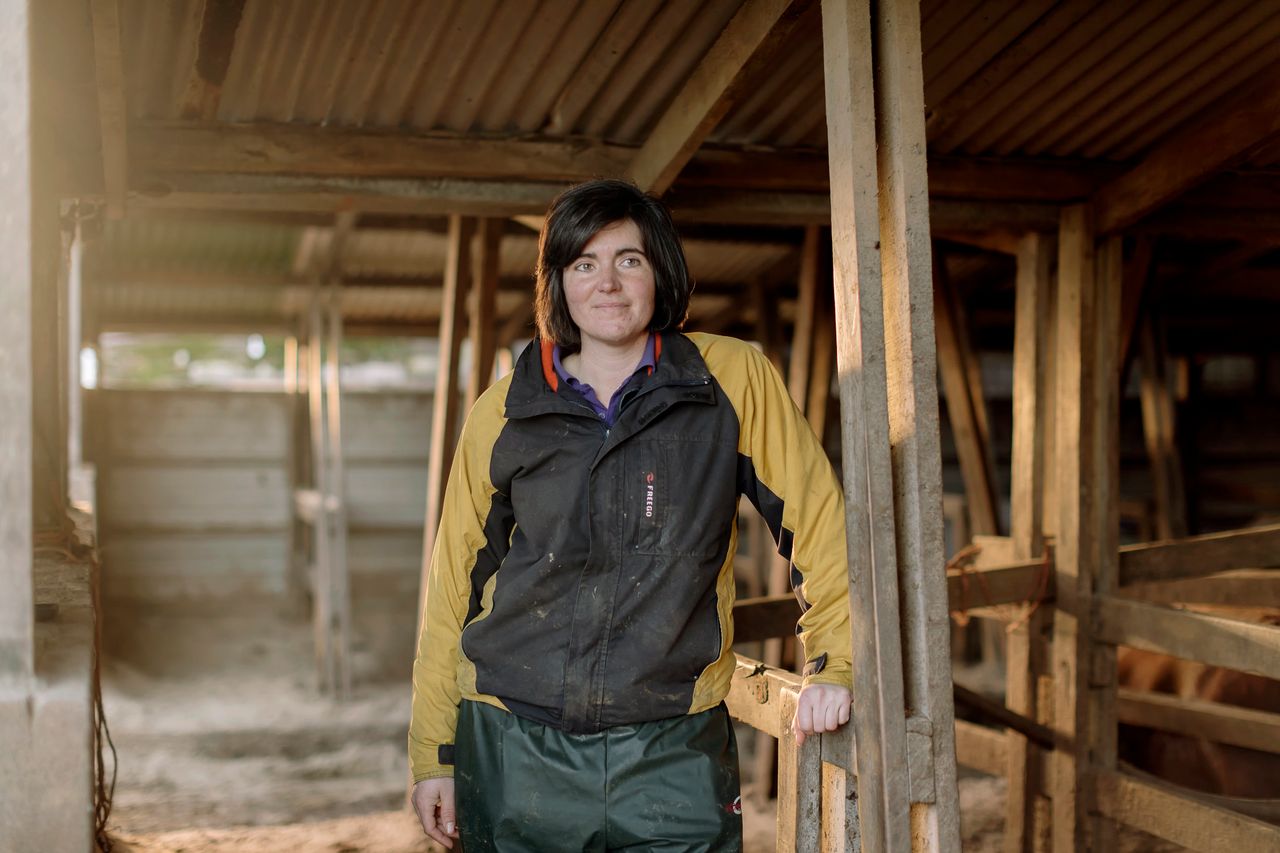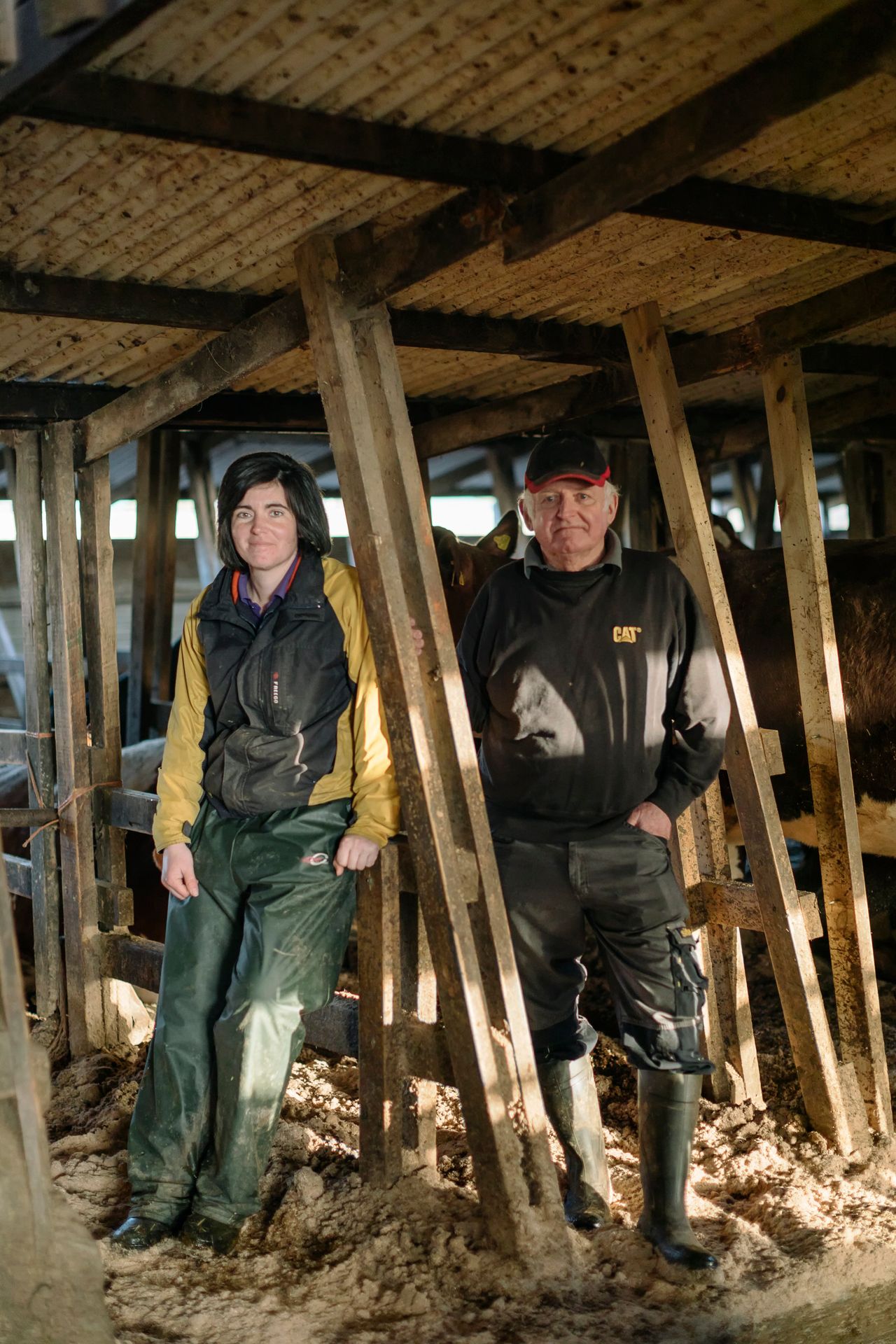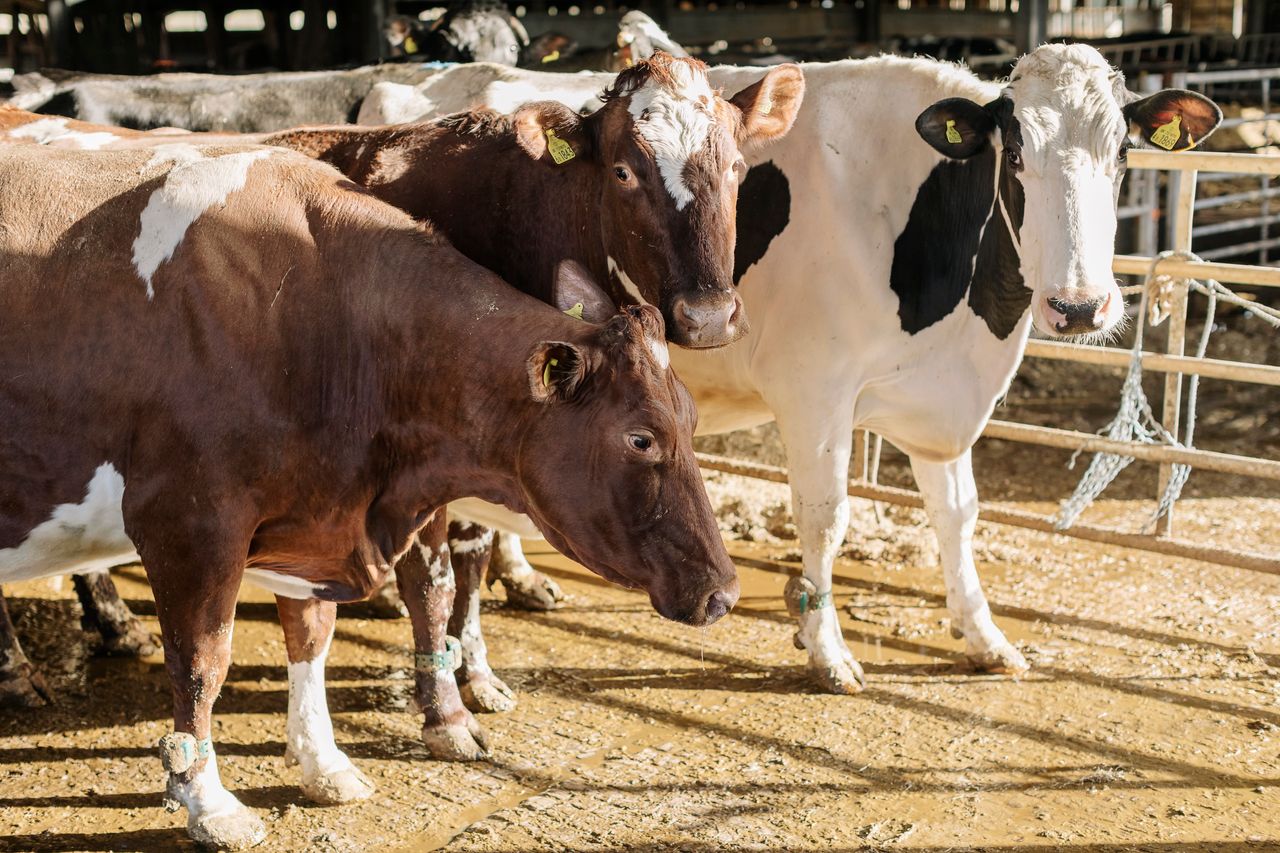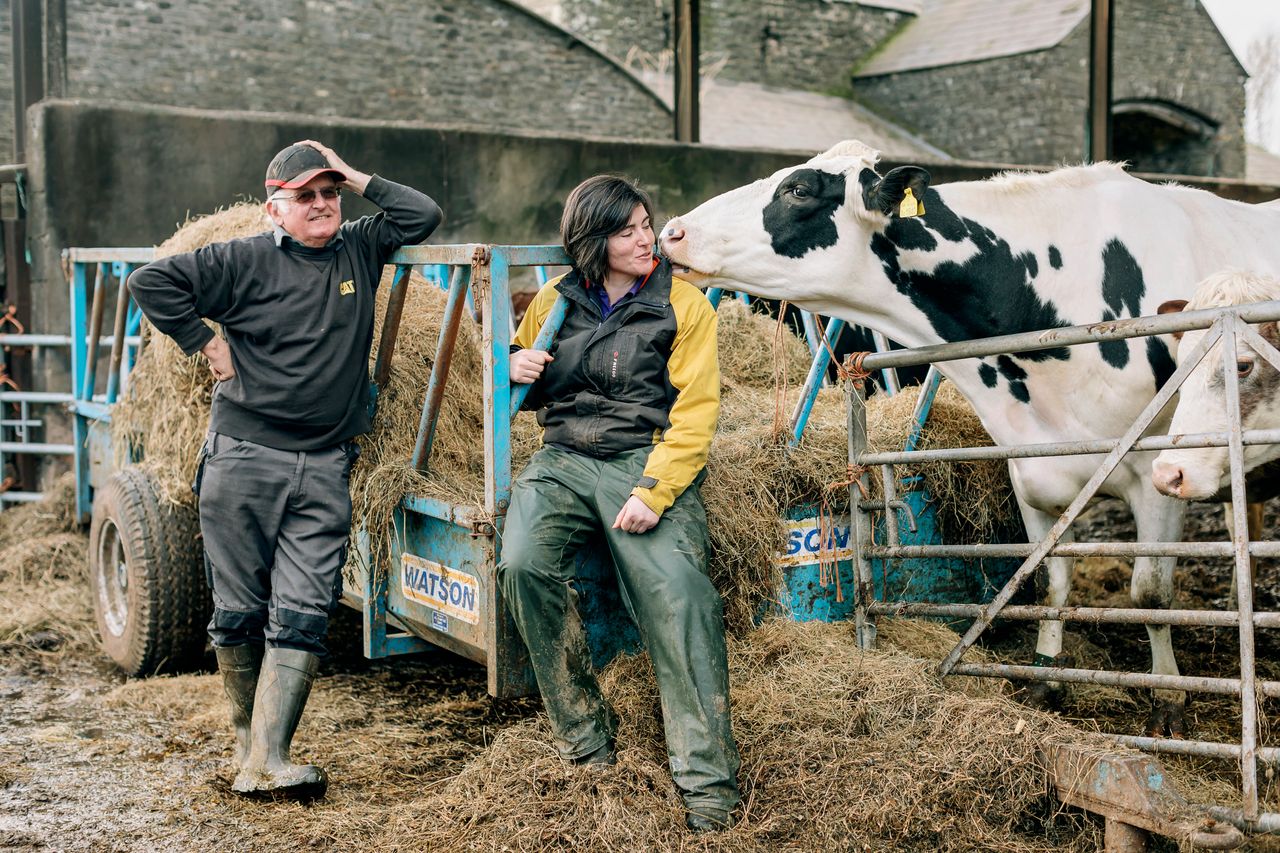Abi Reader’s favourite moment of the working day comes just before daybreak, when the rest of the world is barely awake and she has her farm almost to herself.
“I love it before 8am, before the phone starts ringing and you can just hear the birds singing,” says this third generation farmer from the hamlet of Wenvoe, in the Vale of Glamorgan. “Everything’s quiet, and perhaps you’ve had a calf born in the night and now it’s bouncing around.”
It’s a feeling generations before her would recognise, as enduring as the eighteenth century stone barn in which this spring’s calves are kept. But it’s one of few constants in what has become a fast-changing world.
“I’d never have imagined even 15 years ago that I’d have to defend the fact that I produced food,” says Abi, who works 230 hectares of mixed farmland with her father John and uncle Robert.

But the rise of a vegan activist movement, increasingly keen to document and protest against what it sees as the cruelty of livestock farming’s very existence, has lately put her industry on the defensive. “The abuse over the last two years has really started to crescendo. All the staff here, we have an activist protocol, everyone knows what they need to do if we see a stranger on the farm. But every morning when I milk, I look around and wonder if there’s a camera.”
The 36-year-old has responded not by retreating from scrutiny, however, but by opening up the farm to show there’s nothing to hide. She’s an avid Twitter user, documenting her working day in cow selfies and dairy recipes, and tackling myths about farming as she goes; locally, she organises school visits and open days. And while a generation ago farmers here might have been wary of ramblers on their land, 72-year-old Robert Reader says these days they’re just pleased to see anyone engaging with nature.
But that’s not the only way in which farming communities’ relationship with the outside world has changed.
“When I was a child the milk that came off this farm used to go to Cardiff, and my father used to sometimes express concern that they were buying more milk than they could sell in the vicinity of Cardiff,” says Robert. “How the market was going to pan out was a very localised thing, whereas for quite a few years now if you’re trying to see what’s likely to happen in the next few months you study the auction prices in New Zealand.”

Farming has become a global industry, buffeted by global events - a bad harvest in the Ukraine can be enough now to change crop prices here in south Glamorgan - and nowhere is that more obvious than over Brexit.
Wales voted to Leave by 52.5% to 47.5% in last year’s referendum, and for many farmers years of frustration with EU regulations seemed to overcome any fear of losing subsidies. But confidence has fallen since, according to the National Farmers’ Union, amid widespread uncertainty about what leaving the EU will mean in practice.
The Readers, who voted to stay, say they’re still unsure how Brexit will affect them. “I mean, the cows aren’t going to change. We’re still going to be producing milk unless something catastrophic happens,” says Abi. “Our sheep will probably be affected (by any export tariffs), whether we would still have sheep in the future I don’t know. We’ve already gone out of beef, but what would the market be like for beef in the future? I’m not really sure.”
Britain might, she thinks, have “more of an opportunity to try and decide what we want to do” but she worries about declining food production: “Our self-sufficiency in food has dropped to just over 60%. I suspect it will have to go lower and lower, to 50%, before people realise that it’s better for our country if we produce as much food as we can.”
Although both grew up helping around the farm from early childhood, neither Abi nor Robert originally meant to go into the business. As the second son in an era when the eldest son would normally inherit, Robert didn’t expect there to be room for him; instead, he studied agricultural economics and got a job with the World Bank, only to come home as the farm expanded. Abi didn’t get the bug until she was persuaded to enrol in agricultural college: “It was a bit like Harry Potter going to Hogwarts; he was suddenly doing potions and spells and I was doing classes in grasses and silage. But the moment I stepped into that college I knew what I wanted to do.”

Far from pushing her towards the family business, she thinks her mother was if anything disappointed when she chose what remains a physically gruelling, seven day a week job. “It’s a hard life, especially for women in agriculture. Farmers’ wives had a lot of drudgery,” Robert agrees. Yet it’s one women increasingly choose, with over a quarter of farmers now female and couples increasingly likely to farm together as equal partners. The romantic ideal of small family-run farms being handed down through the generations, however, is facing an increasingly harsh economic reality.
“There used to be satisfactory money in dairy, and although it was 24/7 work you had the big advantage of it being a regular income,” Robert recalls. “Every month, you got the milk cheque. You knew when the money was going to come in and you knew roughly how much it would be - though it was quite a frugal existence.” When he was growing up, theirs was one of 23 dairy farms in the parish. Now, however, it’s the only one left; most of the rest are still farming, but no longer milking.
Although milk prices have recovered from a crash three years ago, they still stood at only just over 30p a litre in December compared to 33.8p in January 2014. Meanwhile cow’s milk increasingly competes with fashionable coconut or almond versions for supermarket shelf space.
But what’s really driving smaller farmers out, says Robert, is the punishing cost of replacing outdated machinery. Even for the Readers, who now have a thriving herd of 180 cows compared to the 30 Abi’s grandfather started out with, spending up to £300,000 recently on a new milking parlour was enough of a daunting prospect that the family sat down and seriously debated whether to carry on milking.

For smaller farms, says Robert, the maths simply wouldn’t add up: “Back in the 1980s, you heard people say the backbone of British farming was the small yeoman farmer. Today I think there’s probably more resilience in large ones.”
The struggle to make a living from the land is, he concedes, in some ways nothing new. Almost half a century ago as a student, he remembers being warned that he was entering a declining industry because rising national prosperity would never quite translate into rising prices for food. But if there was never a mythical golden age of farming, he says, “there were certainly easier times. I think the 80s were a good time, but then I was younger in the 80s. You worry more, as you get older.”
Farming Then And Now
• Farming income peaked in Britain in 1973, partly thanks to subsidies beginning to roll in after the UK joined the European Economic Community (as it then was).
• There have been rollercoaster ups and downs but after several lean years, the estimated total farm income for 2017 soared to a forecasted £5.34 billion – compared to £4 billion in equivalent money in 1988 – thanks to sharply rising meat and crop prices.
• However, the industry has been shrinking. There are a third fewer farm workers than in 1990 and those left are bringing in an average income of only £19,000 a year. A quarter of farms did not make any profit in 2015-16.
For more content and to be part of the ‘This New World’ community, join our Facebook Group.
HuffPost’s ‘This New World’ series is funded by Partners for a New Economy and the Kendeda Fund. All content is editorially independent, with no influence or input from the foundations. If you’d like to contribute a post to the editorial series, send an email to thisnewworld@huffpost.com
